Darius Khondji gives Kodak 35mm a hard-core workout on 'The Lost City of Z'
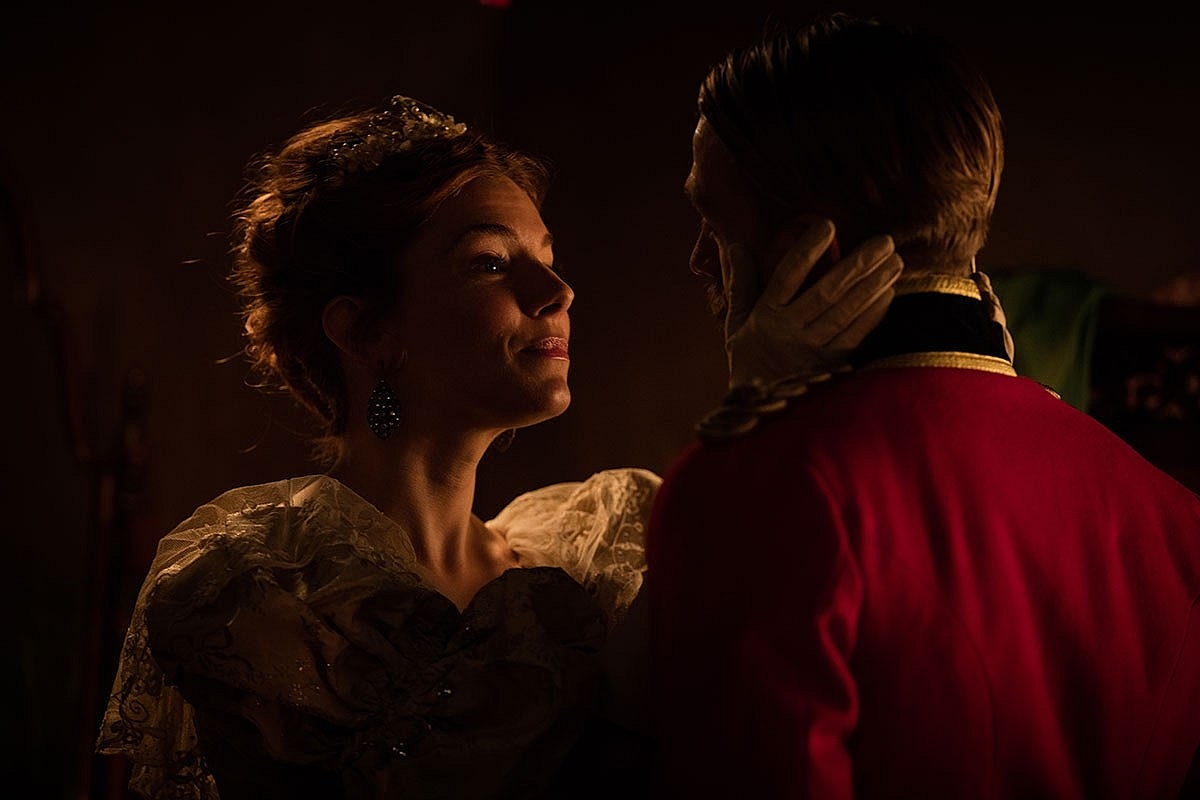
Sienna Miller and Charlie Hunnam in the "The Lost City of Z." Photo by Aidan Monaghan © 2016 LCOZ HOLDINGS, LLC.
Hailed by critics as “sumptuous,” “textured” and “gorgeously shot,” one could be forgiven for thinking that The Lost City of Z was shot way back in the 1970s.
But director James Gray’s 2017 feature, captured on modern KODAK 35mm Film stocks, is a carefully-crafted harkening back to a time when gripping stories about intrepid adventurers were all the rage.
The non-fiction biographical drama describes the real events surrounding British Army officer and zealous explorer Percy Fawcett, who was repeatedly sent to Bolivia by the Royal Geographical Society to find an ancient lost city in the Amazon only to disappear along with his son during a fateful expedition in 1925.
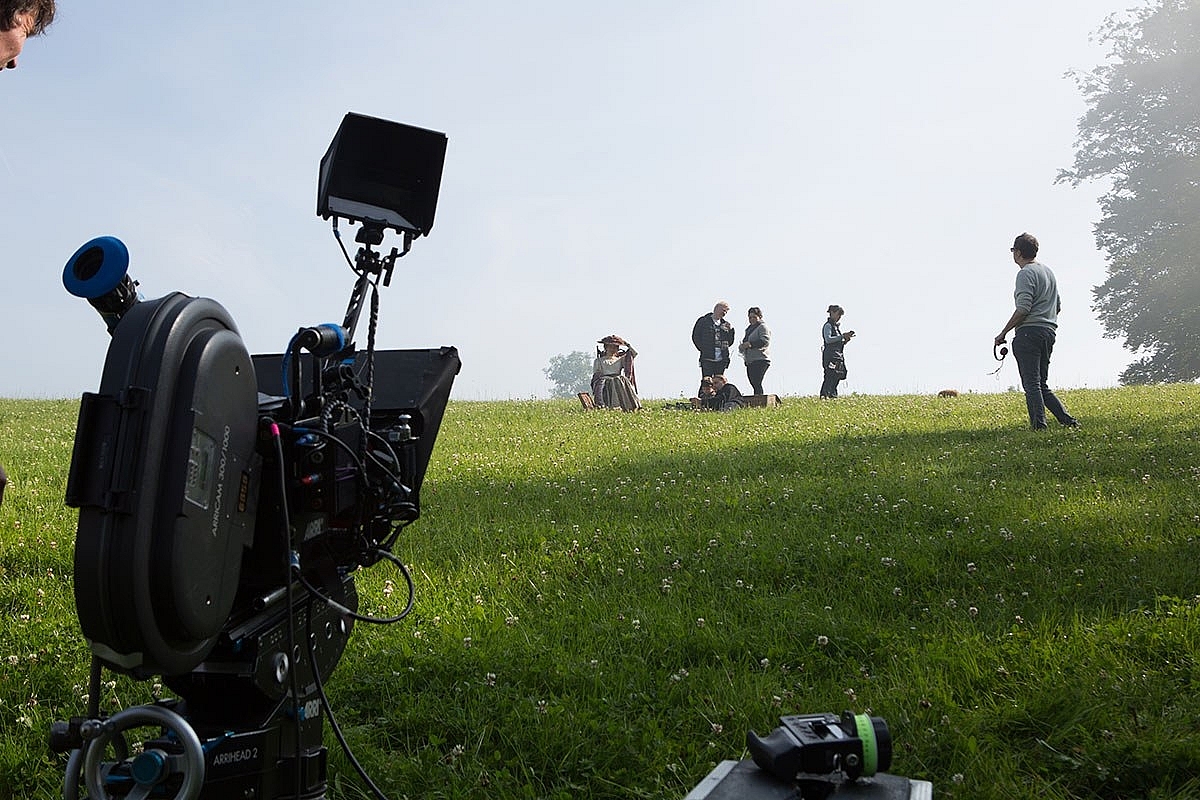
"The Lost City of Z." Photo by Aidan Monaghan © 2016 LCOZ HOLDINGS, LLC.
The feature was photographed in Northern Ireland, in the UK, and the deep jungles of Colombia, South America, by cinematographer Darius Khondji AFC ASC, who has shot films-on-film with an impressive roster of A-list directors. These include: Bernardo Bertolucci’s Stealing Beauty, David Fincher’s Seven, Jean-Pierre Jeunet’s The City of Lost Children, Danny Boyle’s The Beach, Roman Polanski’s The Ninth Gate, Woody Allen’s Midnight in Paris and Wong Kar-wai’s My Blueberry Nights.
The Lost City of Z is Khondji’s second celluloid collaboration with Gray after the pair successfully teamed up to cloak 1920’s Ellis Island in golden hues and deep shadows for The Immigrant.
“Film is an incredible treasure that lets you try lots of different tricks – some of them quite abusive – to make the picture look really old and obtain a wild and beautiful result,” Khondji said. “We effectively destroyed the film negative with various techniques on The Immigrant to achieve the desired emotional aesthetic of that era and adopted a similar approach to distort and damage the image for a grungy result on The Lost City of Z.”
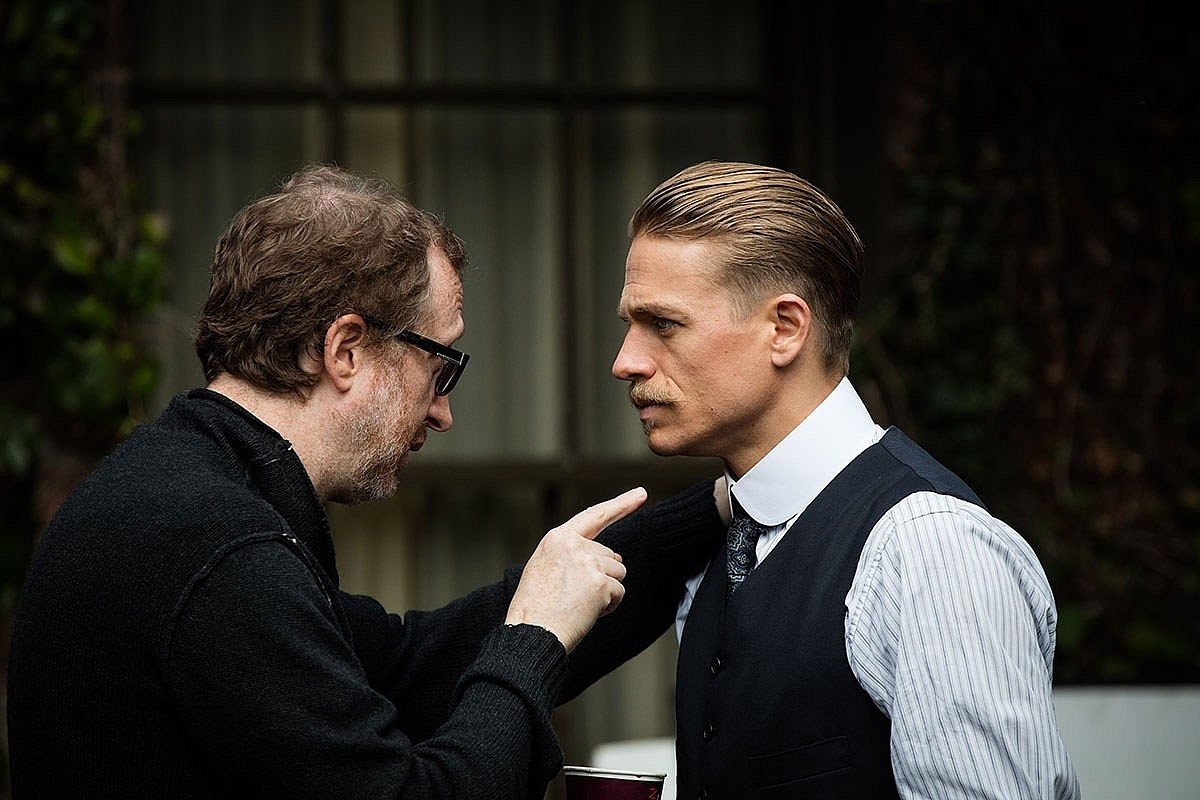
James Gray and Charlie Hunnam in "The Lost City of Z." Photo by Aidan Monaghan © 2016 LCOZ HOLDINGS, LLC.
Khondji added, “Every director has a different way of working. Some are musical. Some are technical. Some react on the spur of the moment to how the actors are performing. James is intuitive and interested in designing and planning all aspects of the colors, textures, costumes, locations and the emotions before production begins – it’s an incredible, inclusive collaboration. Like me, James is a lover of film, so there was never any question of shooting The Lost City of Z on anything else but 35mm.”
Exploring the nature of obsessive adventurers, and associated filmed imagery, Khondji and Gray looked back to movies such as Werner Herzog’s Aguirre, The Wrath of God (1972) and Fitzcarraldo (1982), both shot by DP Thomas Mauch, John Boorman’s Deliverance (1972, DP Vilmos Zsigmond) and Francis Ford Coppola’s Apocalypse Now (1979, DP Vittorio Storaro).
“Along with the gripping cinematography in these movies, there were certain qualities to the film stocks of that time – a blue cast in the blacks, and the rendition of green that was not so clean as it is now – that we really liked. I had previously flashed the negative on The Immigrant to emulate this historic look and decided to do the same again on The Lost City of Z.”
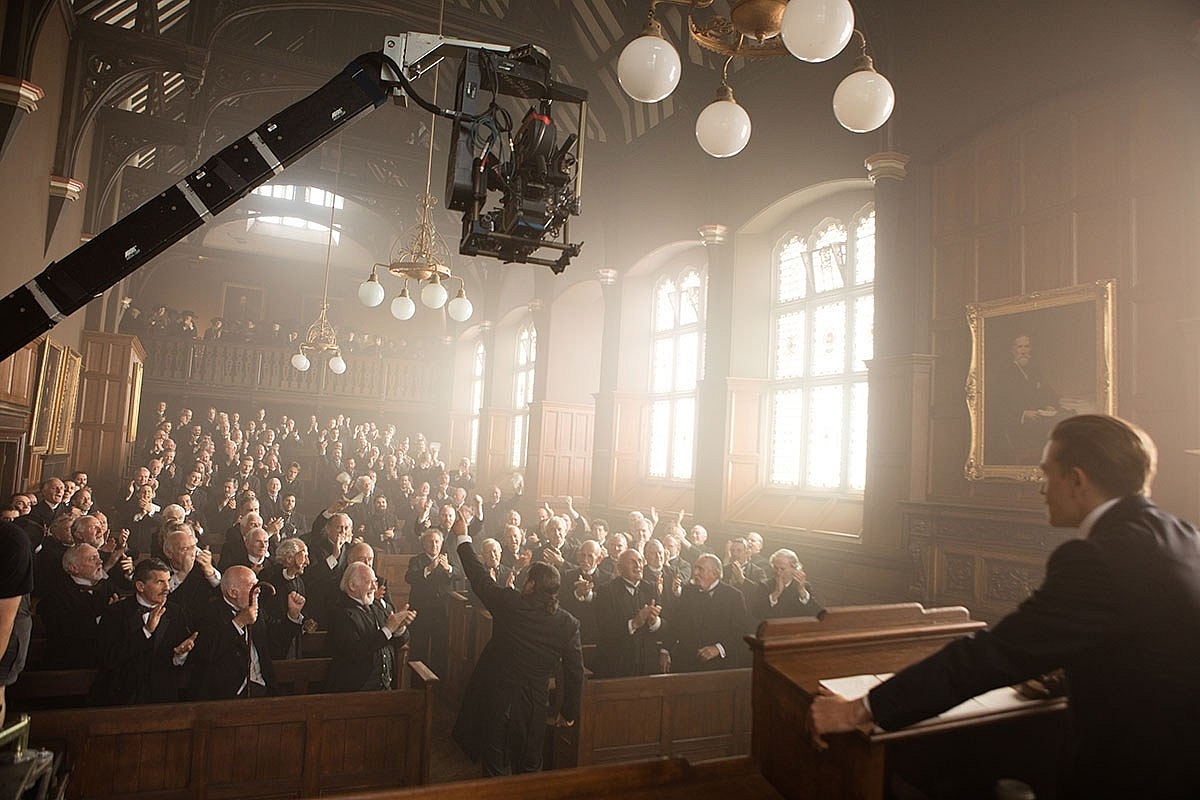
"The Lost City of Z." Photo by Aidan Monaghan © 2016 LCOZ HOLDINGS, LLC.
In cinematography, flashing is the exposure of the film negative to uniform light prior to exposing it to the scene. Along with enabling contrast control to bring out detail in darker areas, it can also be used to add a color cast to shadows without significantly affecting the highlights. In this case, Khondji used ARRI’s Varicon system, fitted with an additional blue gel, to affect the jungle exploration scenes and some of the interiors, such as the Royal Geographic Society scenes.
In their search of other looks, Khondji and Gray were also inspired by the African documentary works of French filmmaker and anthropologist Jean Rouch, considered as one of the founders of French cinéma-vérité, as well as original photographs taken of Fawcett during his Amazonian expeditions.
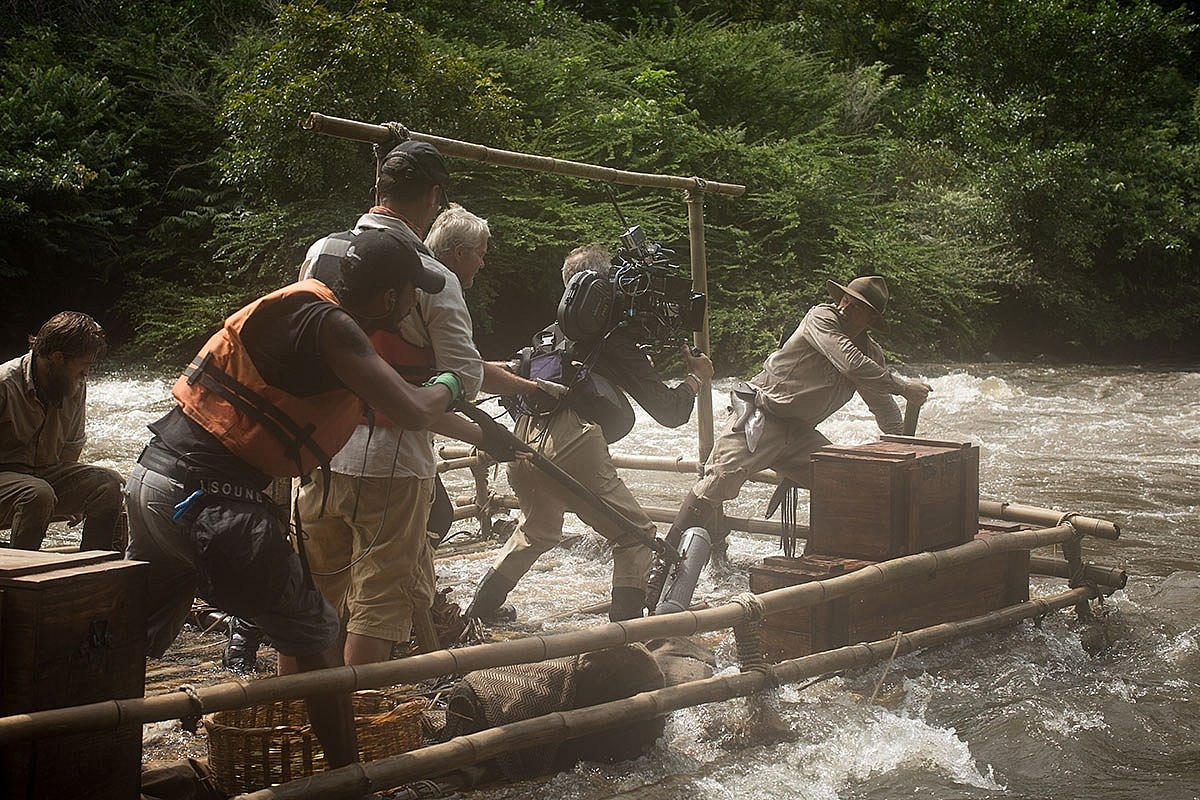
"The Lost City of Z." Photo by Aidan Monaghan © 2016 LCOZ HOLDINGS, LLC.
“These are extraordinary, dynamic images: raw, real, deep and dark, or burnt by the sun,” Khondji noted. “We wanted the same degraded qualities in our film and decided to achieve this in a real, organic way, through combinations of over and under-exposure on set and push-processing at the lab.”
Khondji chose Cinelab in London to handle the negative processing, remarking, “They keep their bath really clean, and their evident passion for filmmaking was impressive. When I carefully inspected the test rushes, the results were just what I wanted.”
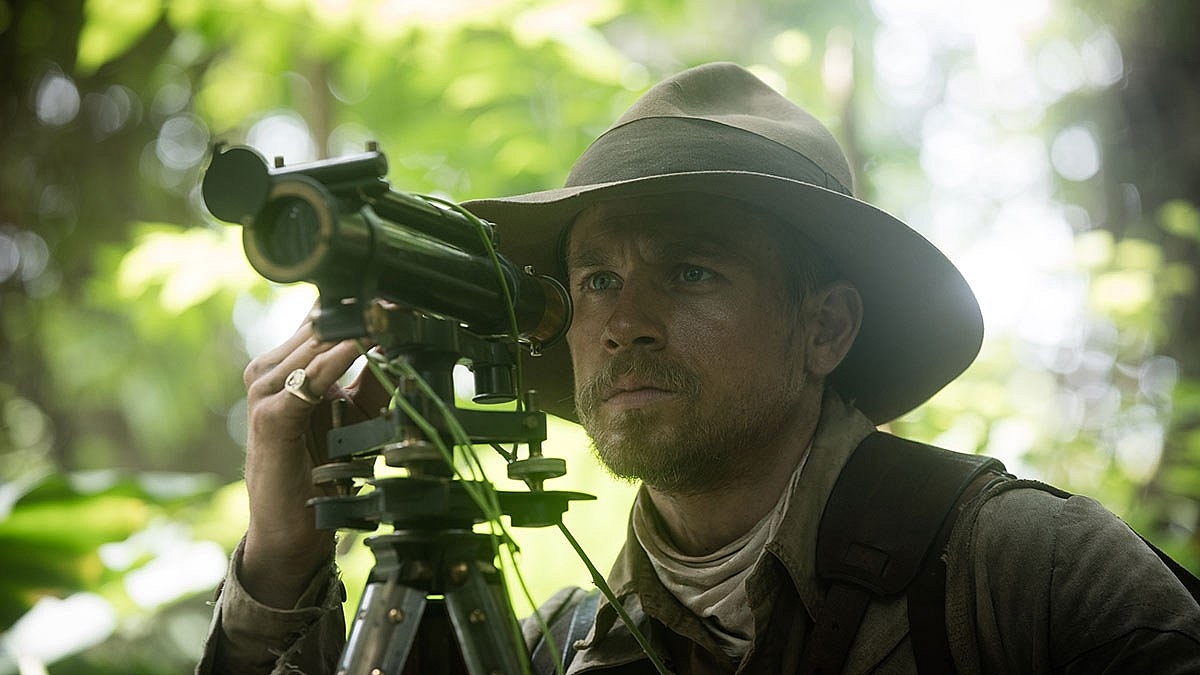
Charlie Hunnam in "The Lost City of Z." Photo by Aidan Monaghan © 2016 LCOZ HOLDINGS, LLC.
For the more intimate portraits of the film’s central characters, Khondji was particularly inspired by the paintings of Edwardian artist John Singer Sargent – in the way he bathed his subjects in soft light with backgrounds falling into deep, rich browns and blacks.
After intensive testing, Khondji lensed The Lost City of Z with vintage B- and C-series Anamorphics dating back to the 1960s and ‘70s and tweaked by Panavision in LA for enhanced close-focus. “The patina and distortion of the Anamophics and the texture of film is a great cocktail and was the perfect canvas to create the different flavors of the images we wanted.”
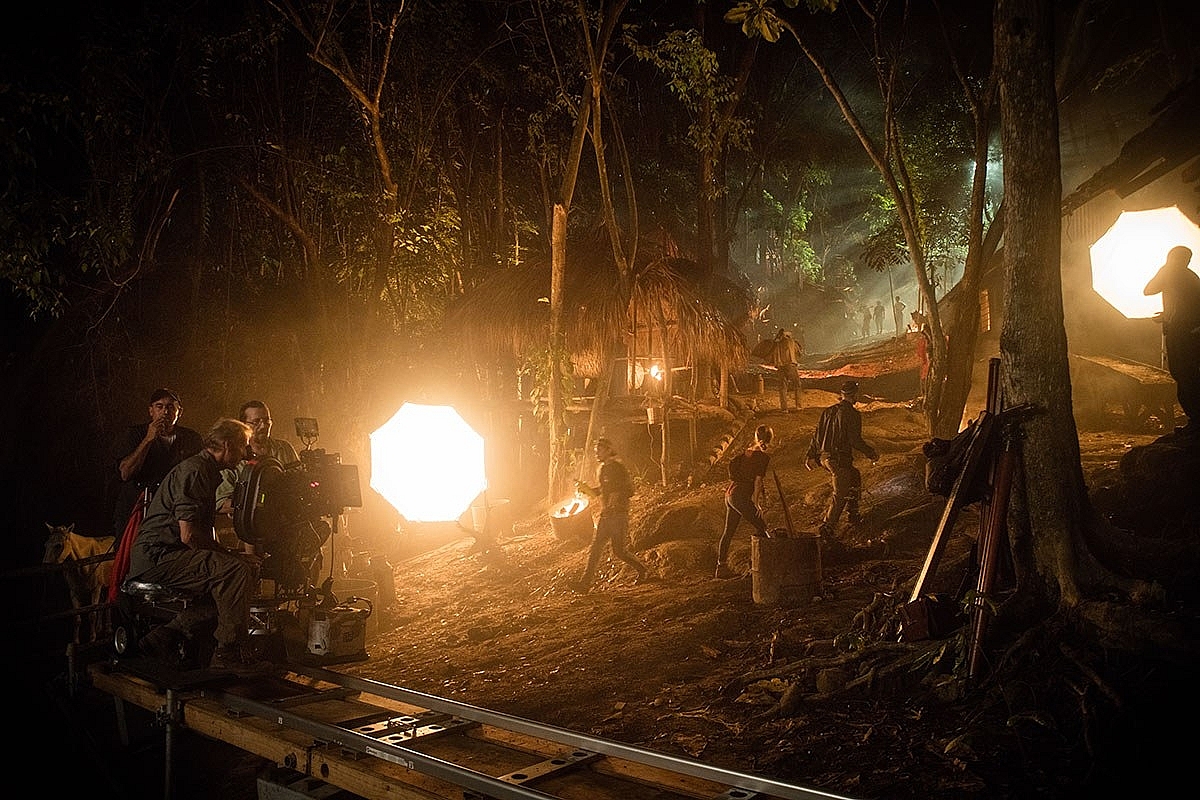
"The Lost City of Z." Photo by Aidan Monaghan © 2016 LCOZ HOLDINGS, LLC.
KODAK VISION3 500T Color Negative Film 5219 was Khondji’s workhorse during the Colombian leg of the production. “As it’s a fast stock, the 500T enabled us to shoot in a wide variety of locations and at different times of day – typically day interiors, dark jungle canopies, at dusk, dawn and night. With the help of production designer, Jean-Vincent Puzos, I lit some of the nighttime jungle scenes just with firelight – flames or burning torches – and then push-processed these at the lab. The skin tones and the way the faces fall off to black are just exquisite.”
However, Khondji also gave the 500T a real workout – shooting the native villages and other exposed patches of jungle in bright sunlight – as part of a pre-determined stratagem to seriously roughen-up the images.
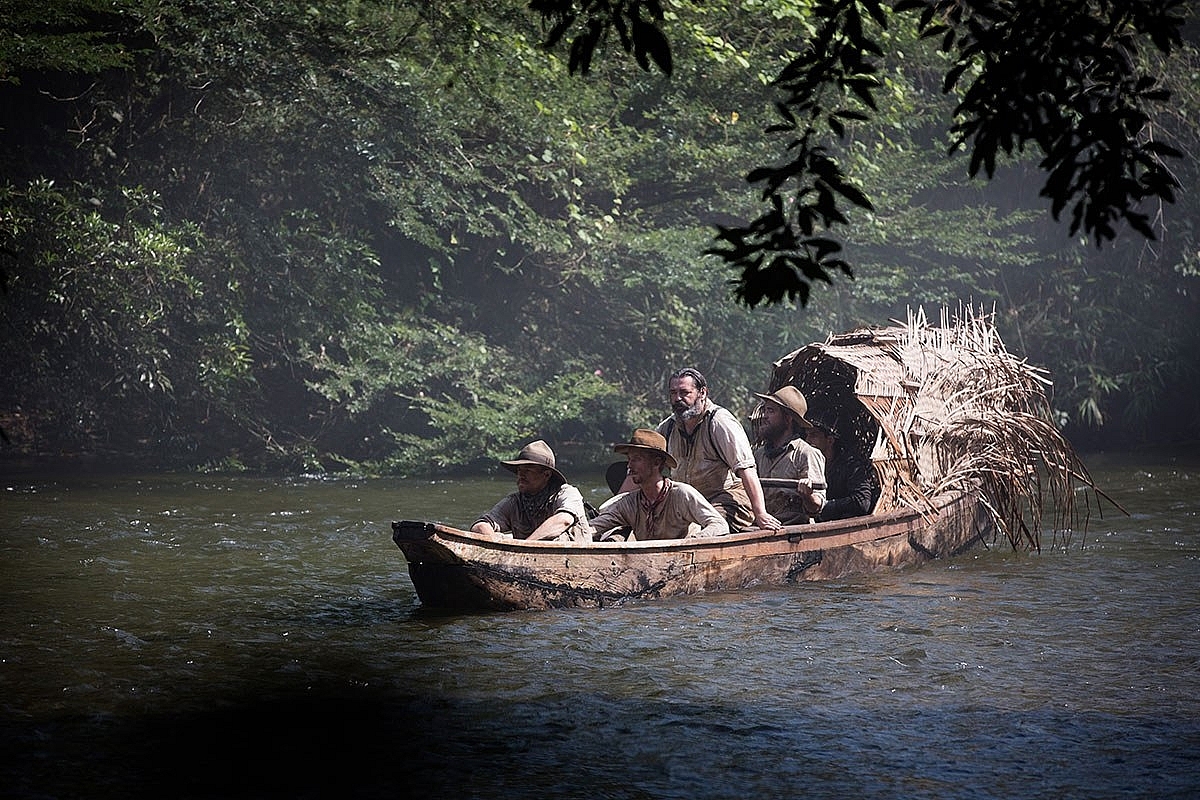
"The Lost City of Z." Photo by Aidan Monaghan © 2016 LCOZ HOLDINGS, LLC.
As he explained, “For these scenes, I pushed the negative really hard by over-exposing it between two or three stops on set and then push-processed the footage at the lab. This pretty extreme approach yielded a much brighter, higher contrast, more grainy and sun-burned look, akin to our original references.”
Khondji shot the luscious rural day exteriors at the beginning of the film on KODAK VISION3 50D Color Negative Film 5203. “It looks great backlit in the bright sun with rich, verdant colors, which I chose to enhance by under-exposing during the shoot and push-processing through the bath.”
Having capturing the dynamic looks of Lost City of Z in-camera on Kodak, Khondji pays tribute to two people downstream “who did wonderful work in transferring the color of the 35mm film negative on to our dailies. Peter Doyle and Alex Gascoigne at Technicolor in London gave me inspiration and many ideas for the final color grade, and I would love to work again with them in a near future.”
Khondji concluded, “Time and again, throughout my career, film has shown how versatile it can be. Although the modern stocks have evolved considerably, it is still possible to get back to those older looks by various means – under and over-exposing the stock, flashing the negative and push-processing at the lab. These processes are much simpler and more magical than you could achieve digitally, and I am absolutely thrilled with the human, natural and exquisitely beautiful, results.
“As a film lover, it’s fantastic to see the surge of people shooting on 16mm, 35mm and 65mm film, and it is such good news that Kodak is making active steps to support filmmakers around the world.”